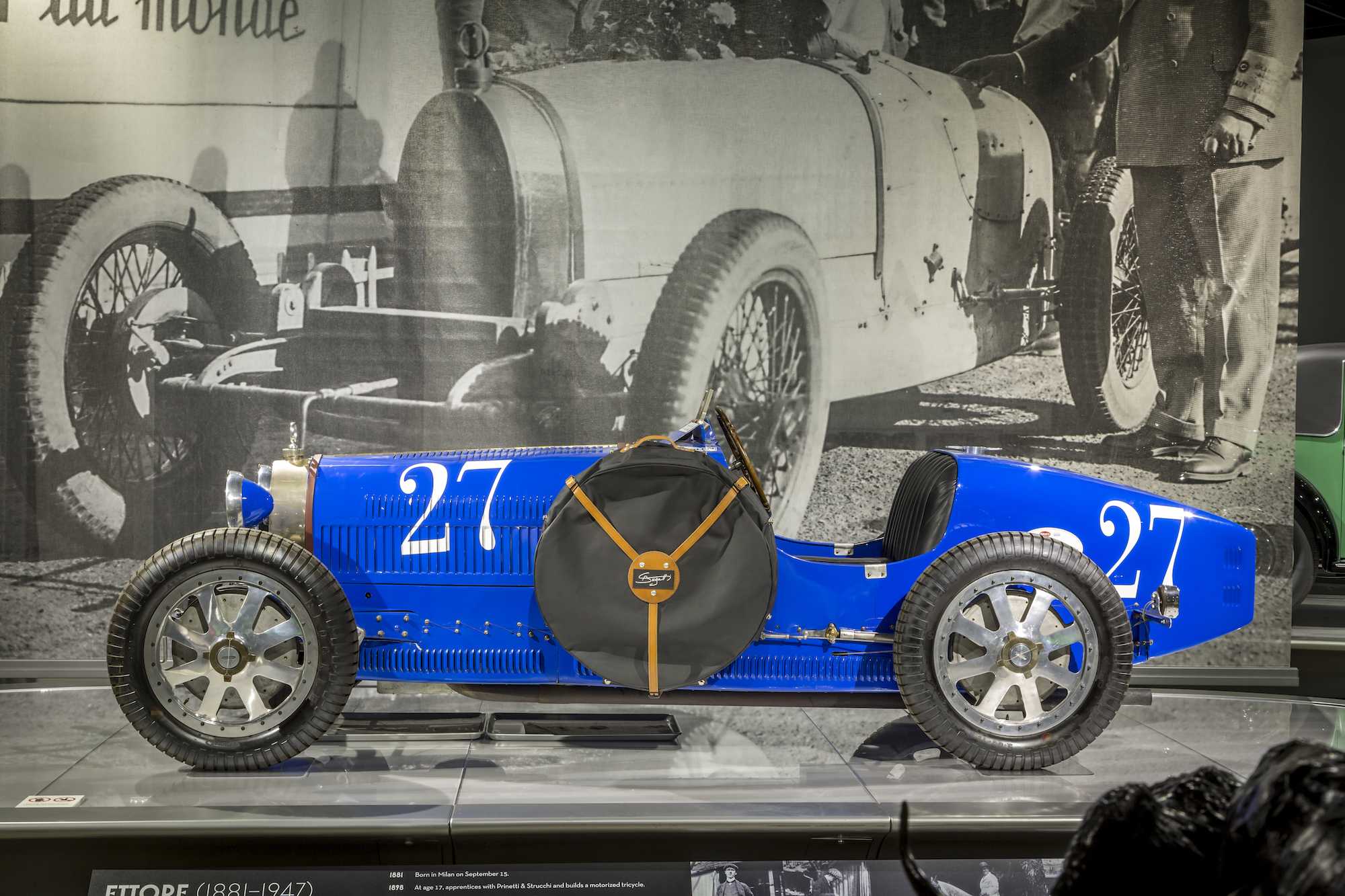1925 Bugatti Type 35C Grand Prix

The descriptions of the Classic Cars in the Directory were partly generated or supplemented with the help of artificial intelligence (AI). The content may occasionally not always be entirely accurate or factually correct despite careful checking.
The Bugatti Type 35C Grand Prix 1925 is a true masterpiece of automotive engineering. This legendary racing car was designed by the famed Italian engineer, Ettore Bugatti, and was built to dominate the grand prix circuits of the 1920s and 1930s. The Type 35C was powered by a supercharged 2.0-liter straight-eight engine with a DOHC configuration, that produced an impressive 125 horsepower. The car was capable of accelerating from 0 to 60 mph in just 8 seconds and had a top speed of 125 mph.
The engine of the Type 35C is a masterpiece of automotive engineering. It is a supercharged 2.0-liter straight-eight with twin overhead camshafts. The engine had a compression ratio of 5.5:1 and produced 125 horsepower at 5,000 rpm. The supercharger was a Roots-type unit that provided additional boost pressure to the engine, allowing it to generate more power. This was a revolutionary technology at the time, and it helped make the Type 35C one of the fastest racing cars of its era.
The transmission of the Type 35C is a four-speed manual with a lead screw and a differential. The gearbox was located in front of the engine, and the clutch was a single-plate dry unit. The car had a rear-wheel drive layout, and the differential was attached to the rear axle by a torque tube.
The suspension of the Type 35C consisted of semi-elliptical leaf springs with hydraulic shock absorbers. The front suspension was a solid axle with a semi-elliptical spring, while the rear suspension was an inverted quarter-ellipse and also featured hydraulic shock absorbers. The car had drum brakes on all four wheels.
The chassis of the Type 35C was made of steel tubing and was very lightweight. The car had a wheelbase of 2.4 meters and a track of 1.3 meters. The overall length of the car was 3.9 meters, and it weighed only 750 kilograms.
The body of the Type 35C was also lightweight and aerodynamic. The car was designed to minimize drag and featured a long hood, low height, and narrow fenders. The driver sat in a small cockpit, enclosed by a minimalist bodywork. The car had a distinctive Bugatti radiator grille, and the body was finished in traditional Bugatti blue.
The Bugatti Type 35C Grand Prix 1925 is a true masterpiece of automotive engineering. The combination of its lightweight chassis, powerful engine, and advanced engineering made it one of the most successful racing cars of its time. The car’s technical details are a testament to the engineering prowess of Ettore Bugatti and his team, and even today, the Type 35C remains an icon of the early days of motorsports.
Milestones
- Bugatti Type 35C Grand Prix was first introduced in 1925. - It was designed by Ettore Bugatti and his son Jean Bugatti. - The Type 35C Grand Prix was equipped with a 2.0-liter inline-eight engine producing up to 95 horsepower. - It was capable of reaching a top speed of 120 mph and completing a quarter-mile in just over 14 seconds. - The Type 35C Grand Prix won the Targa Florio race in 1925 and went on to dominate the European racing scene for years afterward. - Bugatti Type 35C Grand Prix's notable victories include the French GP in 1926, the German GP in 1928, and the Monaco GP in 1929. - In 1931, the Type 35C Grand Prix was replaced by its successor, the Type 51, which featured a supercharged engine for increased power.Technical
• Engine: 2.0-liter inline-eight, supercharged • Max power: 128 horsepower • Max speed: 133 mph • Transmission: Four-speed manual • Suspension: Front solid axle and live rear axle • Brakes: Drum brakes • Weight: 1,433 pounds • Wheelbase: 94.5 inches • Length: 135 inches • Width: 55 inches • Height: 43 inches • Fuel capacity: 51 gallons • Body material: Aluminum • Production years: 1925-1929 • Number built: 225